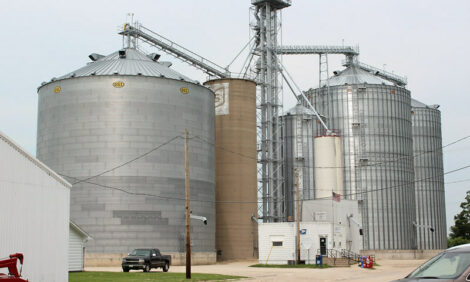



Producing Records Produces Results
US - Planning and preparation make a big difference in efficient cowherd management.| Photo: Stockxchange |
The Best Practices Manual from Certified Angus Beef LLC (CAB) offers management tips that may help. “To make progress and profit in the cattle business, records must be kept,” the manual states.
John Paterson, Montana Extension beef specialist, agrees. He oversees the Montana Beef Network program, where nearly 300,000 calves have been source- and age-verified in this decade. Some ranchers there tie calf information back to individual cow identification (ID).
“We know we can use that to look at what kind of calves this cow is routinely producing,” he says.
“Then we can tighten up the cowherd in terms of cow size, and get rid of some of the outliers.”
Following calves through the feeding phase gives more answers. “Did we make a mistake by really being critical of these lightweight, poor performing calves?” Paterson asks. “It looks to me like a poor calf on the ranch has been a poor calf in the feedlot, too.”
The Beef Network is developing a “report card” for producers. “We want to give him some idea of where he fits in terms of body condition score, weaning weight, cow weight and those kinds of issues,” he says. “You can’t do that without an ID tag.”
Tracking health requires ID, too.
“From a disease management standpoint, you’ve got to have a calf management program,” Paterson says. Montana is completing a statewide test for bovine viral diarrhea (BVD).
“You can’t do that test unless you know where the ear notch came from,” he says. “That calf has got to be married back to its mother.”
Pfizer Animal Health veterinarian Glenn Rogers says consistent information can be the key to identifying a health challenge early.
“Records can help evaluate the reproductive health of a herd,” he says. Comparing one year’s breeding rate to the baseline can point to problems. Even a slight drop can indicate the possibility of BVD or other diseases that hurt reproduction.
“You need to at least have good enough records to know what happened,” Rogers says. Those records can also add dollars when marketing calves.
“If you maintain a processing map and volunteer that information at marketing, it really adds value,” he says. “If you go to the trouble of working cattle, you want to get the most out of it.” The data can come in handy if you want to make production changes, like tightening your breeding timeline.
“If you’re going to back up a breeding season, you need to develop a calendar for what they’re currently doing,” Rogers says. The transition from an undefined season to a two- to three-month window can take several years, he adds.
Although it’s a long process, there are many benefits to making the switch.
“If there’s one management idea that’s most effective for herd health, it’s a controlled breeding season,” Rogers says. “That gives you not only consistency and uniformity in a calf crop, but also consistency and uniformity in your health program.”
Typically, vaccinations are given based on a production calendar, but must default to seasonal if the herd is not in the same stage at the same time, he says. “Reproductive vaccinations should be done routinely in all cowherds, but you’ll get more bang for your buck with a defined breeding season.”
The shorter window also provides more options, because certain products, like modified-live vaccines, are more difficult to incorporate into herds with no defined breeding period.
“With the high cost of labor, anything we can do to lessen labor expenses in calving, handling and marketing is another bonus,” Rogers says.
Paterson says it just takes some up-front investment to make handling easier.
“As I travel around there’s one thing I wish we had on more ranches: squeeze chutes,” he says.
“You can work cattle faster, but I think you can also work cattle safer.” From facilities upgrades to better year-to-year analysis, a few tweaks could make a big difference in terms of progress and profit.
For copies of the Best Practices Manual, contact Marilyn Conley at 800-225-2333 or [email protected].
TheCattleSite News Desk


